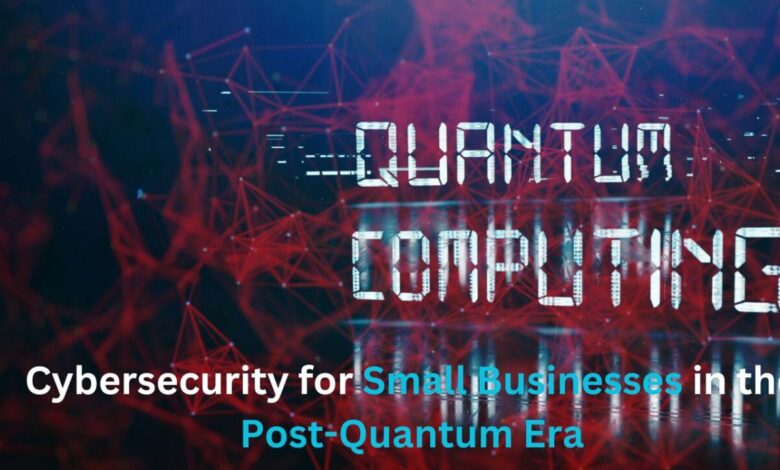Cybersecurity Strategies for Small Businesses in the Post Quantum Era
Quantum computing can make the most essential components of most current security protocols harder to use. Follow these steps to keep the data of your business safe.

People regard quantum computers as the next major technological advancement. However, as these models get better, they might put at risk the modern encryption methods that companies use every day to keep their private data safe. That is a threat that no business can ignore.
Thank God, governments, companies, and public and private institutions saw this coming and worked together to come up with a solution: post-quantum cryptography, a set of encryption protocols that quantum computers can’t break.
PQC, The New Standard in Cryptography
Quantum-resistant techniques, known as post-quantum cryptography (PQC), protect modern computers from hackers who might use quantum computers to attack them.
The National Institute of Standards and Technology (NIST) recently said that the first three new quantum-resistant algorithms were now available and asked all government departments to start shifting to them immediately.
These new methods have replaced modern methods like Advanced Encryption Standard (AES), Rivest-Shamir-Adleman (RSA), Diffie-Hellman, Elliptic Curve Cryptography (ECC), and others.
Experts claim that the new methods, which employ unlined lattice and hash-based cryptography, provide protection against post-quantum cyberattacks. Using these methods will lessen or eliminate many of the threats that cybercriminals pose to business IT systems after quantum computing.
3 Biggest Post-Quantum Threats to Small Businesses
In the past few years, cyberattacks on small businesses have become more common, and the damage they do is terrible. A small business may require up to 24 hours and incur costs of approximately $21,659 to recover from a cyberattack.
Small businesses could be hit by the most common types of hacks after quantum computing. IT officials need to be aware of these threats.
- Data compromise: Cybercriminals could gain access to company data by compromising items such as user credentials, business plans, employee records, bank accounts, earnings reports, intellectual property, personal information about clients, and more.
- Digital signature compromise: Cybercriminals can fake digital signatures on important business documents and correspondence, like emails, memoranda, pay cheques, contracts, purchase orders, financial transactions, audit records, legal papers, and more, because public key cryptography makes digital signatures possible.
- Harvest now, decrypt later: Post-quantum breaches might look like a problem for tomorrow to someone who hasn’t studied them. However, the concept of “harvest now, decrypt later” has made hacks after quantum computing a real issue today. If hackers steal private company data today, they could store it until they get a quantum computer that is powerful enough to decrypt it, which could take years.
Related: Top 10 Cybersecurity Trends to Watch in 2025
Follow these steps to reduce quantum risk.
Reducing quantum risk won’t be quick or easy. Setting up all the necessary technical, tactical, administrative, and physical steps could take several years. That’s exactly why companies should begin the PQC transfer process right away.
Here are four steps to get you going:
1. Get leadership on board.
Admit it: not much can happen without the support of leaders. Teams need help and direction from leaders to be successful, whether you want to accept it or not. In addition to providing the necessary funds, resources, and guidelines to complete the migration, leaders can also establish the company’s migration goals, engage other departments, and manage any issues that may arise during the change management process. Senior management support is important and will make the work a lot easier.
2. Run a risk analysis and determine your level of network security.
IT leaders should find out what the network’s strengths and flaws are before putting PQC into place. A study of risks is one of the best ways to do this.
A formal risk analysis typically includes the following components:
- Finding the risks and ordering them
- Examining the risks closely can reveal their potential impact on your business.
- Identifying the most effective strategies to reduce risks and enhance the security of your network is crucial.
Other factors include the types of encryption algorithms your systems use (AES, RSA, ECC, hybrid, etc.) and their properties; the data stored on your systems and how you plan to organise it (by sensitivity and/or importance); the location of your data (servers, hard drives, remote, cloud, etc.); and the time and effort required to transition from your current encryption algorithms to PQC algorithms (i.e., determining your “crypto agility”). Professionals of IT companies may also want to explore hybrid models that use both modern cryptography and PQC. Once the move is complete, you will need to make regulatory updates.
3. Calculate the cost of a PQC migration.
Small businesses have limited funds, so they need to be careful about how much they spend on technology. Therefore, it is crucial to carefully calculate the cost of the PQC transfer. The most expensive part will be getting rid of and updating old systems that don’t work with PQC methods. You might also include the costs of getting a PQC consultant, training IT staff, or even hiring new IT staff, depending on how big the IT department is and how much they know. Keep in mind that PQC is a relatively new concept, and you may not have a clear understanding of its cost until you learn how to transition to it, so proceed cautiously.
4. Build a governance committee.
A governance committee, typically composed of department heads and experts, can oversee the migration process from start to finish. The group needs an IT expert to be its CTO. This individual will strategize the migration and ensure all offices adhere to the established deadlines. A small business can set up a governance group; all you need are a few leaders to make it work.
Don’t wait to create defenses against quantum computing.
For now, quantum computers aren’t powerful enough to beat modern encryption algorithms. But the quantum community is slowly getting better. Experts generally concur that the full impact of the quantum threat won’t manifest until the mid-30s. Small businesses can strengthen their networks between now and then, before hacks resulting from quantum computing become commonplace.
Small businesses can handle the dangers of the post-quantum age by switching to PQC and using these safety tips.



